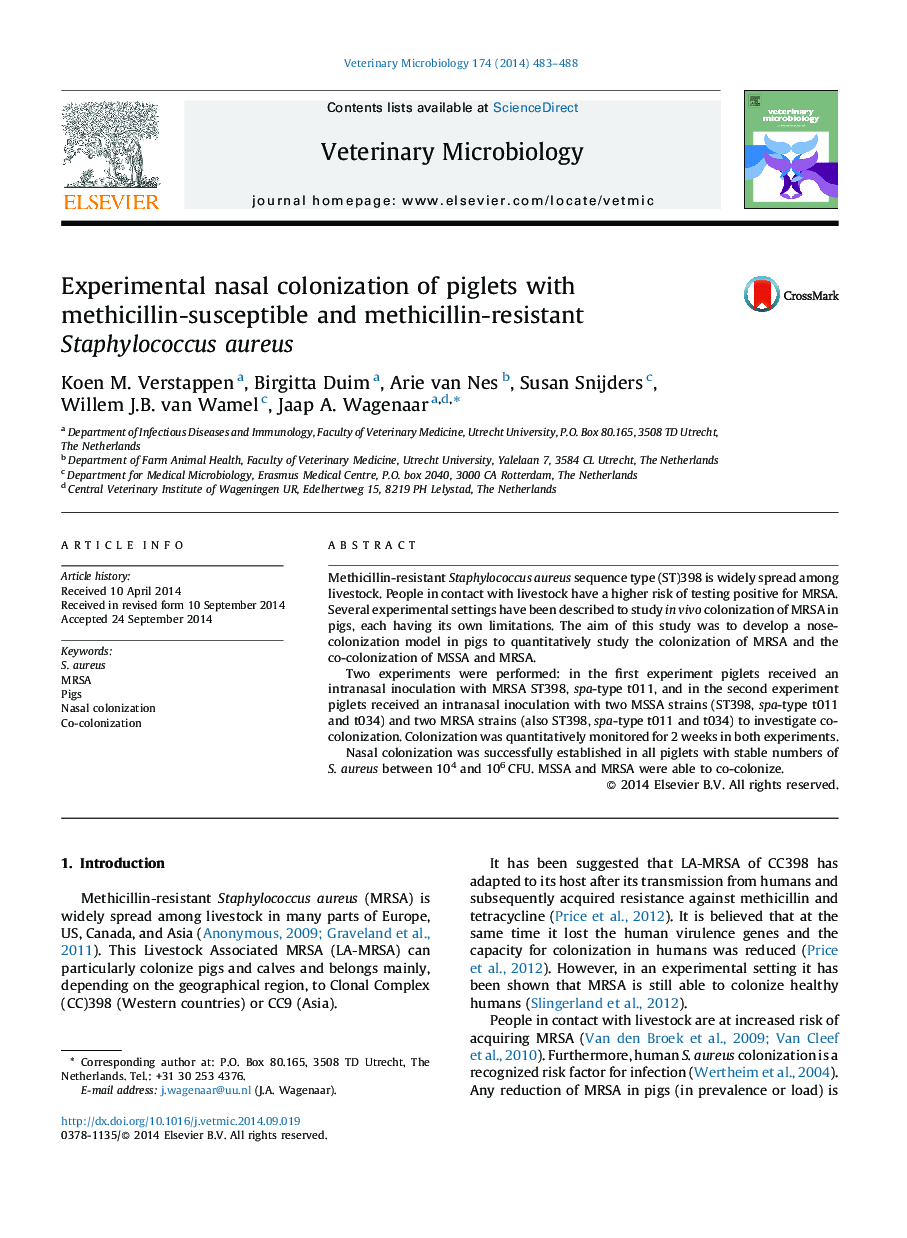| Article ID | Journal | Published Year | Pages | File Type |
|---|---|---|---|---|
| 5800407 | Veterinary Microbiology | 2014 | 6 Pages |
â¢MRSA and MSSA were able to co-colonize in the noses of pigs.â¢Nasal colonization and co-colonization remained stable during for 2 weeks.â¢This model is suitable for quantitative analysis of colonization of MRSA and MSSA.
Methicillin-resistant Staphylococcus aureus sequence type (ST)398 is widely spread among livestock. People in contact with livestock have a higher risk of testing positive for MRSA. Several experimental settings have been described to study in vivo colonization of MRSA in pigs, each having its own limitations. The aim of this study was to develop a nose-colonization model in pigs to quantitatively study the colonization of MRSA and the co-colonization of MSSA and MRSA.Two experiments were performed: in the first experiment piglets received an intranasal inoculation with MRSA ST398, spa-type t011, and in the second experiment piglets received an intranasal inoculation with two MSSA strains (ST398, spa-type t011 and t034) and two MRSA strains (also ST398, spa-type t011 and t034) to investigate co-colonization. Colonization was quantitatively monitored for 2 weeks in both experiments.Nasal colonization was successfully established in all piglets with stable numbers of S. aureus between 104 and 106Â CFU. MSSA and MRSA were able to co-colonize.
